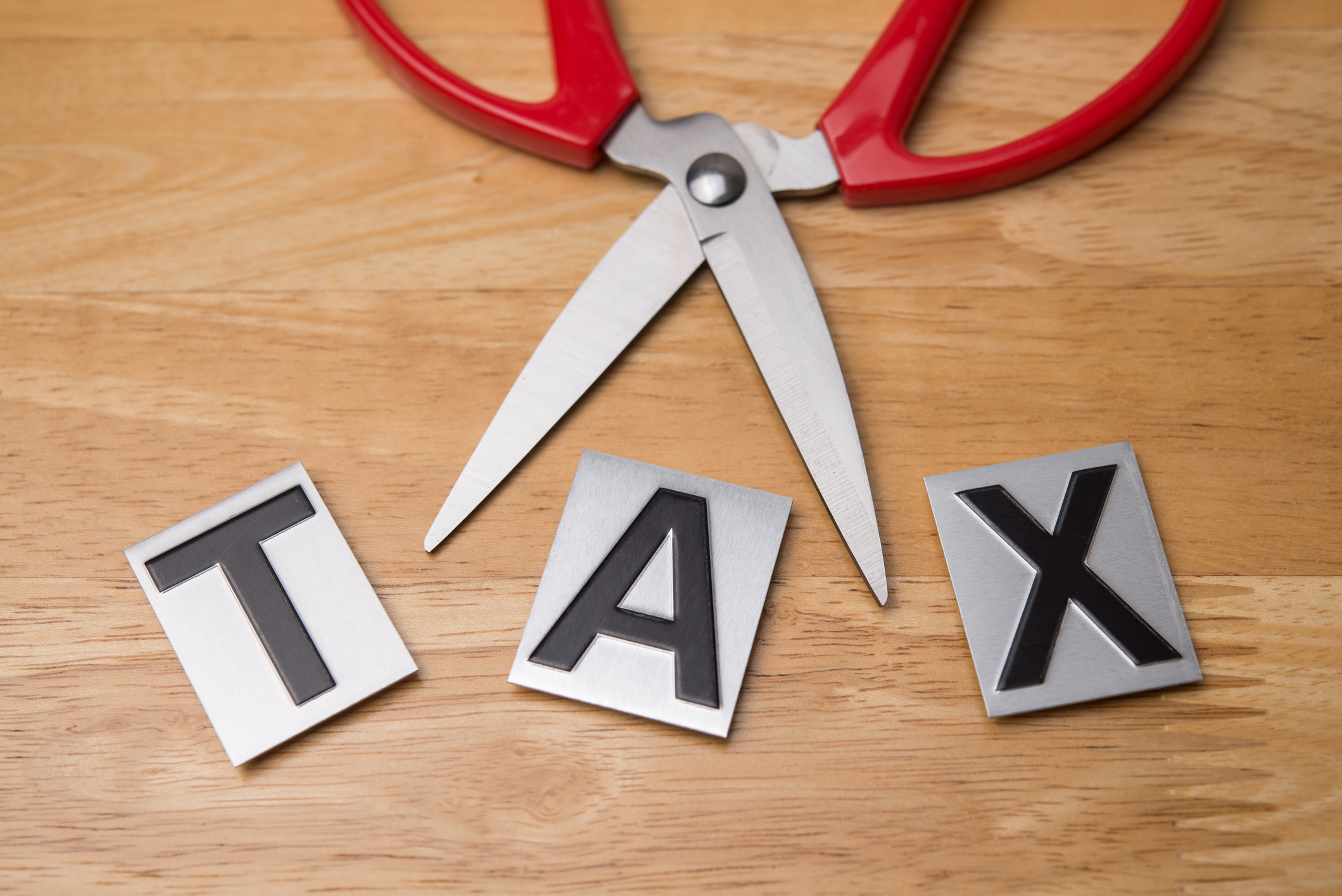Could Millions of Taxpayers Be Facing the AMT (Alternative Minimum Tax) in 2025?
Millions of taxpayers could owe the AMT if Congress allows the tax breaks de-fanged in the 2017 Tax Cuts and Jobs Act to expire.

Getting the right tax advice and tips is vital in the complex tax world we live in. The Kiplinger Tax Letter helps you stay right on the money with the latest news and forecasts, with insight from our highly experienced team (Get a free issue of The Kiplinger Tax Letter or subscribe). You can only get the full array of advice by subscribing to the Tax Letter, but we will regularly feature snippets from it online, and here is one of those samples…
A lot has been written on the soon-to-expire tax provisions in the 2017 Tax Cuts and Jobs Act. Many of the provisions in the 2017 tax law that affect individuals, such as the lower income tax rates, higher standard deductions, higher child tax credits and bigger lifetime estate and gift tax exemption, are set to expire after 2025, unless Congress acts.
The individual alternative minimum tax (AMT) is a sleeper tax issue. Similar to other provisions affecting individuals in the 2017 Tax Cuts and Jobs Act, the 2017 easings to the AMT are set to lapse after 2025, unless Congress decides to extend them. But unlike those other provisions, you don't see much coverage on the possible upcoming changes to AMT and how that would impact taxpayers.
From just $107.88 $24.99 for Kiplinger Personal Finance
Become a smarter, better informed investor. Subscribe from just $107.88 $24.99, plus get up to 4 Special Issues

Sign up for Kiplinger’s Free Newsletters
Profit and prosper with the best of expert advice on investing, taxes, retirement, personal finance and more - straight to your e-mail.
Profit and prosper with the best of expert advice - straight to your e-mail.
AMT is due to the extent it exceeds your regular federal income tax liability. It has two rates: 26% on the first $232,600 of alternative minimum taxable income and then 28%. The income figures are indexed annually for inflation.
Many tax items are treated differently in calculating alternative minimum taxable income when compared with computing regular taxable income, including the following:
- Standard deductions aren't allowed in computing alternative minimum taxable income.
- If you itemized on Schedule A, you must add back your state and local tax deductions.
- Under the rules that were in place for pre-2018 years, you also had to add back personal exemptions, interest on home equity indebtedness not used to buy or improve your home, and most miscellaneous itemized deductions taken on Schedule A. The 2017 Tax Cuts and Jobs Act temporarily nixed many of these write-off through the end of 2025.
- For AMT purposes, incentive stock options are taxed when exercised.
- Interest received from private-activity municipal bonds is subject to the AMT.
- AMT depreciation is slower, with write-offs stretched over longer periods.
- Many intangible drilling costs can wind up being added back to alternative minimum taxable income.
Some personal credits are allowed against the AMT, including the child tax credit, the adoption credit, the American Opportunity credit and the dependent care credit.
The 2017 Tax Cuts and Jobs Act kept the individual AMT on the books. But it defanged this oft-lamented tax, albeit only until the end of 2025.
The 2017 law raised the AMT exemption amounts that are deducted when calculating the amount of AMT that you owe. In 2017, the AMT exemption amounts were $84,500 for joint filers, $54,300 for single filers and household heads, and $54,700 for married couples filing separately. For 2024 returns, these figures are $133,300, $85,700 and $66,650. The amounts are adjusted each year for inflation.
It also greatly increased the phaseout zones for the AMT exemptions. On 2017 Form 1040 returns, the exemption phaseout zones started at $160,900 for joint filers, and $120,700 for single filers and people filing as head of household. Compare these numbers with the $1,218,700 and $609,350 figures for 2024 returns. Again, these figures are adjusted each year for inflation.
As a result of the 2017 Tax Cuts and Jobs Act, far fewer taxpayers now pay the AMT. 207,674 filers owed AMT with their 2022 Form 1040, totaling approximately $3.8 billion. Compare this with 5.07 million individual returns reporting $36.4 billion in AMT on 2017 tax returns. That’s a huge decrease in AMT filers. Sometime in 2018 or 2019, the IRS retired its AMT Assistant online tool because of the dwindling number of users.
Unless Congress acts, the AMT rules will revert to those in place in 2017. President-elect Donald Trump often says he wants to see the changes in the 2017 tax law extended, although he hasn’t spoken directly about the AMT. You can expect Republican lawmakers to fight for an extension of the AMT easings, but it’s too soon to tell whether they will be successful. Congressional Republicans and Trump want to enact lots of tax breaks, and not all will make it into any final legislation.
This first appeared in The Kiplinger Tax Letter. It helps you navigate the complex world of tax by keeping you up-to-date on new and pending changes in tax laws, providing tips to lower your business and personal taxes, and forecasting what the White House and Congress might do with taxes. Get a free issue of The Kiplinger Tax Letter or subscribe.
Related Stories
- A Look at Donald Trump's Tax Plans
- Key Tax Provisions That Are Expiring After 2025
- What's Happening With Taxes on Overtime Pay?
Profit and prosper with the best of Kiplinger's advice on investing, taxes, retirement, personal finance and much more. Delivered daily. Enter your email in the box and click Sign Me Up.

Joy is an experienced CPA and tax attorney with an L.L.M. in Taxation from New York University School of Law. After many years working for big law and accounting firms, Joy saw the light and now puts her education, legal experience and in-depth knowledge of federal tax law to use writing for Kiplinger. She writes and edits The Kiplinger Tax Letter and contributes federal tax and retirement stories to kiplinger.com and Kiplinger’s Retirement Report. Her articles have been picked up by the Washington Post and other media outlets. Joy has also appeared as a tax expert in newspapers, on television and on radio discussing federal tax developments.
-
 Holiday Tax Scams: 'Tis the Season to be Wary
Holiday Tax Scams: 'Tis the Season to be WaryTax Scams Navigating tax tricks of the holiday season may be daunting, but don't let that destroy your festive spirit
-
 Metro by T-Mobile Is Giving Away This Samsung Galaxy A16: Which Plans Are Eligible?
Metro by T-Mobile Is Giving Away This Samsung Galaxy A16: Which Plans Are Eligible?Metro by T-Mobile is offering free Samsung Galaxy A16 phones on eligible plans right now. Here’s how the deal works.
-
 I Drive and Collect Classic Cars: Here’s How I Got Started
I Drive and Collect Classic Cars: Here’s How I Got StartedAre classic cars a hobby or an investment strategy — or both? Either way, the vintage car scene is much cooler and more affordable than you think.
-
 The November CPI Report Is Out. Here's What It Means for Rising Prices
The November CPI Report Is Out. Here's What It Means for Rising PricesThe November CPI report came in lighter than expected, but the delayed data give an incomplete picture of inflation, say economists.
-
 Law Reversal Looming? Trump Eyes 2026 Gambling Winnings Tax Change
Law Reversal Looming? Trump Eyes 2026 Gambling Winnings Tax ChangeTax Deductions It's no secret that the IRS is coming after your gambling winnings in 2026. But how long will that last?
-
 Trump's Plan to Eliminate Income Tax: 7 Things to Know Now
Trump's Plan to Eliminate Income Tax: 7 Things to Know NowTax Policy The potential consequences of eliminating taxes in favor of Trump tariffs could impact everything from inflation to Social Security and might give some U.S. taxpayers pause.
-
 Costco Sues Over Trump Tariffs: What Could That Mean for Prices in 2026?
Costco Sues Over Trump Tariffs: What Could That Mean for Prices in 2026?Tariffs The retailer is making headlines not just for its famous hot dog and gold bars but for suing the Trump administration over tariffs.
-
 Are New Trump $2,000 Stimulus Payments Coming in 2026? What to Know Now
Are New Trump $2,000 Stimulus Payments Coming in 2026? What to Know NowTax Policy A promise of $2,000 tariff dividend checks is raising questions and fueling confusion.
-
 Could Tax Savings Make a 50-Year Mortgage Worth It?
Could Tax Savings Make a 50-Year Mortgage Worth It?Buying a Home The 50-year mortgage proposal by Trump aims to address the housing affordability crisis with lower monthly mortgage payments. But what does that mean for your taxes?
-
 What Services Are Open During the Government Shutdown?
What Services Are Open During the Government Shutdown?The Kiplinger Letter As the shutdown drags on, many basic federal services will increasingly be affected.
-
 Trump 2025 Tax Bill: What’s Changing and How It Affects Your Taxes
Trump 2025 Tax Bill: What’s Changing and How It Affects Your TaxesTax Law From standard deduction amounts to tax brackets and Medicaid cuts, here’s what individual filers need to know about tax changes in Trump's so called "big beautiful bill."